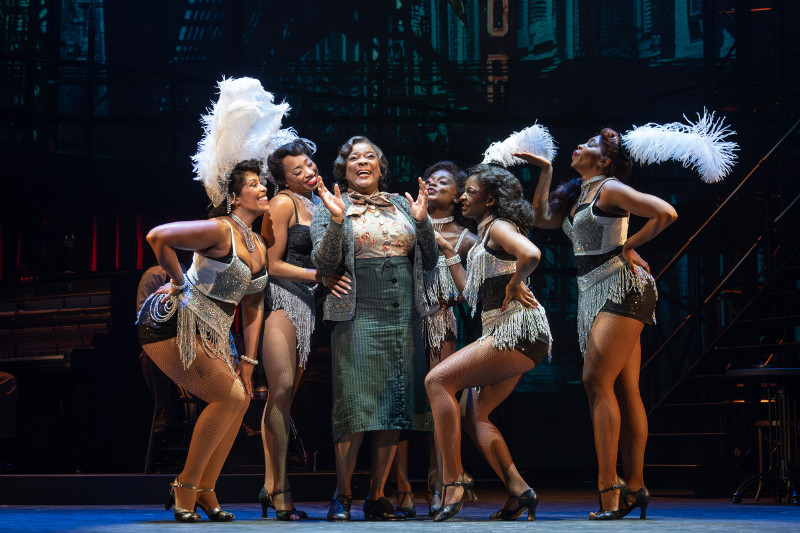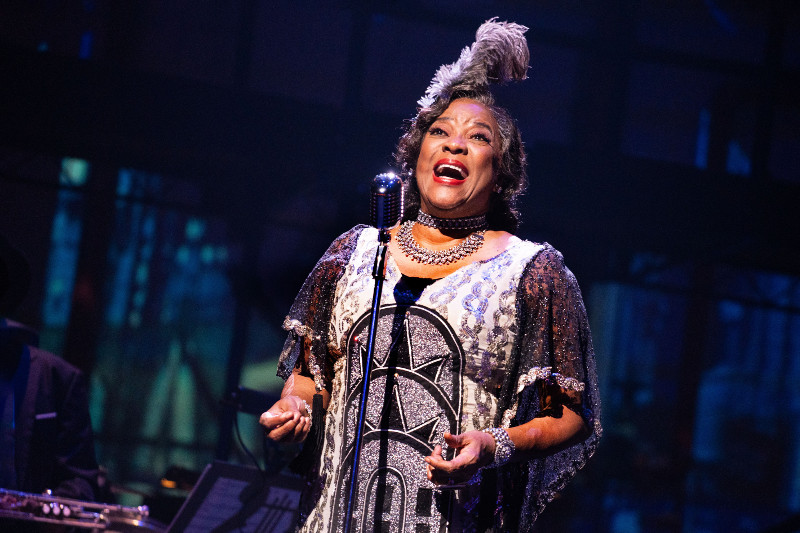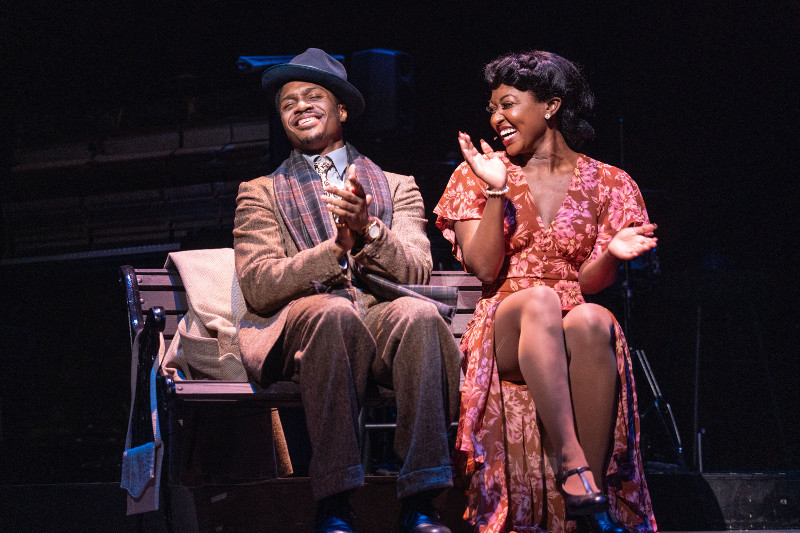
My introduction to Pal Joey came at New York City Center in 1995, when the then-new “Encores” series presented the iconic Rodgers and Hart’s 1940 musical with its original Hans Spialek orchestrations restored. The music – which included an old-fashioned overture and a five-minute ballet (a Richard Rodgers specialty in those vintage early musicals) to close the first act – had a bouncy-yet-sophisticated sheen that won me over completely. Peter Gallagher as Joey, Patti LuPone as Vera Simpson, Bebe Neuwirth as the society interviewer who sings the ultra-witty “Zip” – these actors made the characters, the milieu, the moral ambiguity come alive in a way that remains with me today.
(A CD of the production was recorded – you can hear it on YouTube.)

The show I attended this past weekend – same title, same theater – had advance interviews that made clear that one should expect a very different experience. “Encores” productions mainly aim to re-create original orchestrations, though they did adapt the book of a musical for their concert stagings; the 1995 Pal Joey was adapted by no less masterly a hand than that of Terrence McNally. The creators of this newly conceived show intended from the start of the project to change many of its aspects, which had a reputation for “not working” in part because Joey appeared at a time when musical-theater audiences were taken aback by a manipulative, self-aggrandizing central character.

In many ways, this new Pal Joey was born of intelligent, broad-minded intentions. A key aspect was making Joey a Black singer with a forward-looking approach. He’s still brashly self-confident, still eager for success and willing to make moral compromises to achieve it. But his pushiness and impatience are at the service of an artistic vision that wants to bring change to the stale 1940s Chicago nightclub scene.

His overtly sexual deal-making with wealthy, older Vera Simpson – who holds the purse strings for the nightclub where Joey works, and dreams of taking charge –now has the added frisson of an interracial affair. In the era, that could attract threats and blackmail. But Vera is now pointedly a widow, whereas in the original she was quite married yet set up (and took delight in, during one of many original songs that have been cut) a “den of iniquity” for her trysts with Joey.
New, often intriguing, jazz arrangements have been created by Daryl Waters for the songs in this production—and the superlative musicians certainly make a strong case for them. But the song list is odd and problematical. Many of the show’s original songs have been cut; I count only six from the 1995 version that are included here. They are replaced by an over-abundance of other Rodgers and Hart songs from other shows of the era – great songs, many very celebrated. But they often feel shoehorned in, lacking logical motivation. It becomes far too much of a potentially good thing.
The over-extended version of Pal Joey, co-directed by Tony Goldwyn and Savion Glover,was bogged down by this excess and also by sluggish pacing of the book scenes. The witty sparkle and deft timing of Loretta Devine, in the newly devised role of the struggling manager of the club on which Joey sets his sights, were most welcome and brightened up proceedings that had turned dour.
Ephraim Sykes as Joey has the ability to retain charm while expressing his character’s willful arrogance, and smooth dance moves that could meet the challenges of Glover’s deft choreography for the varied nightclub routines. He was believable in his urgent expressions of impatience while waiting for his vision of more sophisticated musical possibilities to be given a chance to be heard. Elizabeth Stanley sang excellently as Vera but didn’t yet seem fully comfortable in the role. Aisha Jackson, in the re-conceived role of Linda English, Joey’s more innocent (yet now more knowing and assertive) love interest, started out quietly and kept revealing additional facets of her performance.
Glover incorporated a good deal of sophisticated, inventive tap into the choreography and also created an ensemble of fierce, shadowy-tapping “Griots” who surround and perturb Joey during his moments of crisis doubt. This added layer was intriguing but not fully integrated into the action; it vanished during nearly all of the second act, until the very end.
In 1995 I exited City Center in a heightened state, having seen a show definitely of its time, but with a score and cast that made it a rich, delightful experience. This Pal Joey left me respectful of the thoughtful intentions and efforts behind this very different musical — and wishing it could have been brisker, tighter and less over-stuffed.
Photocredits: Joan Marcus for New York City Center
Susan Reiter covers dance for TDF Stages and contributes regularly to the Los Angeles Times, Playbill, Dance Australia and other publications.
